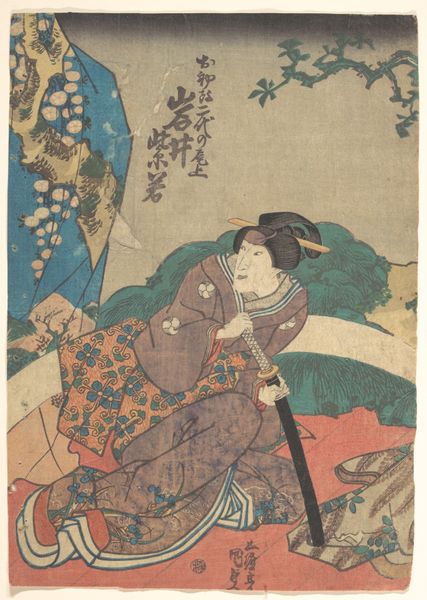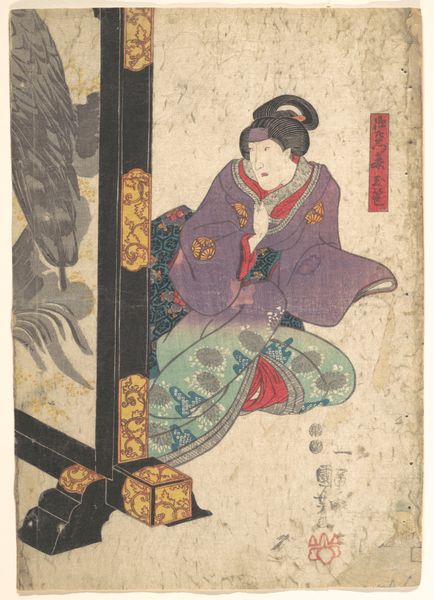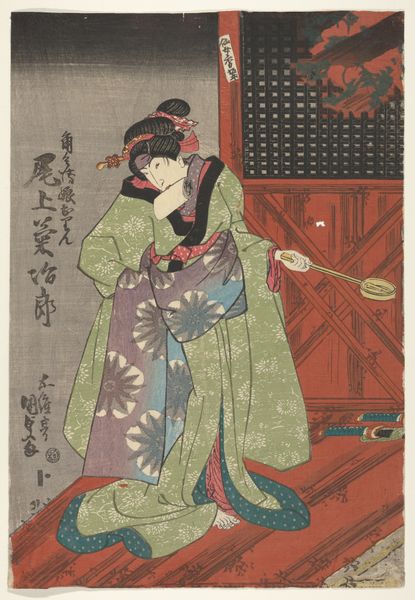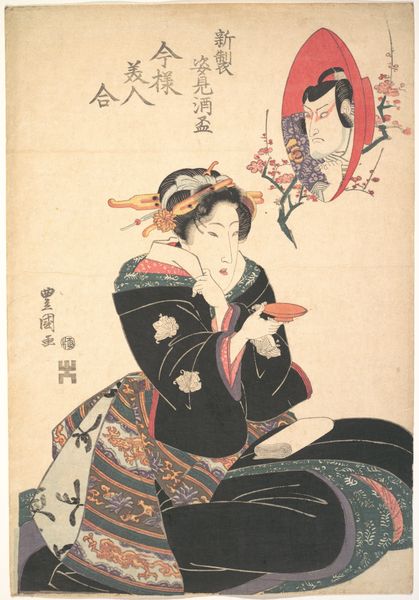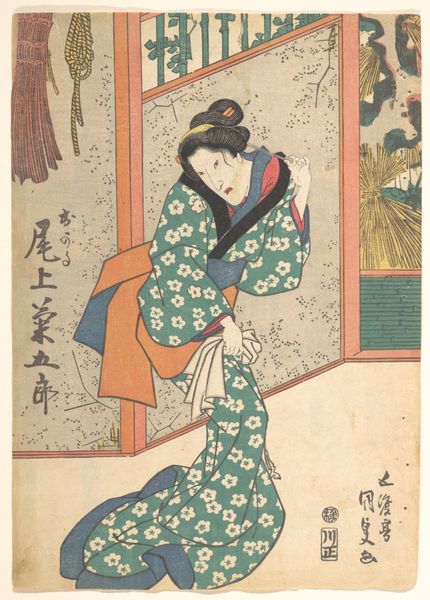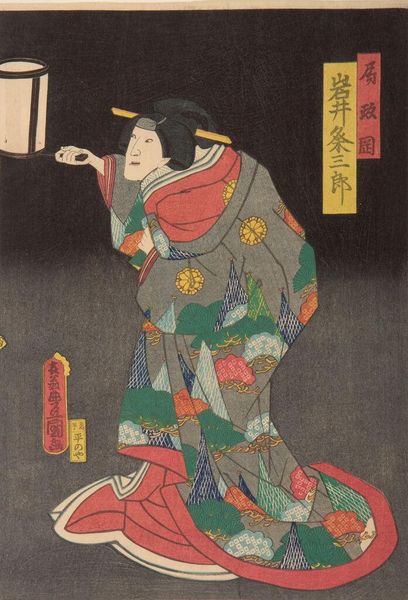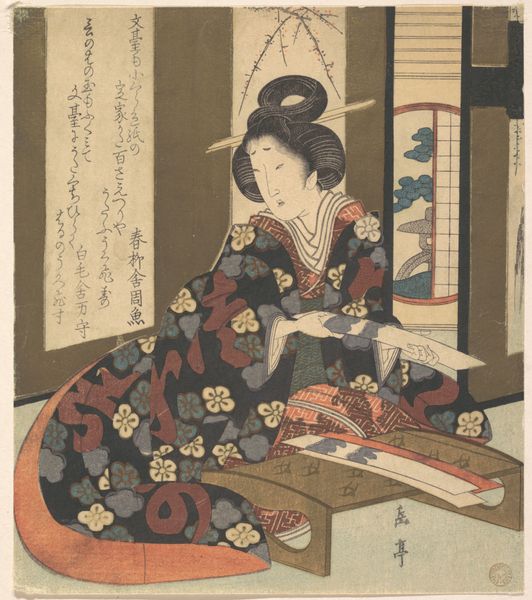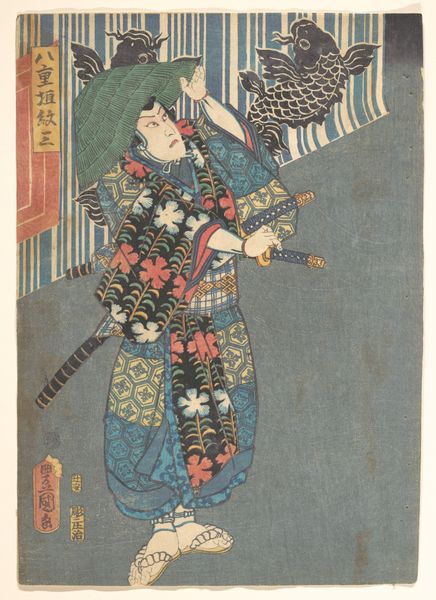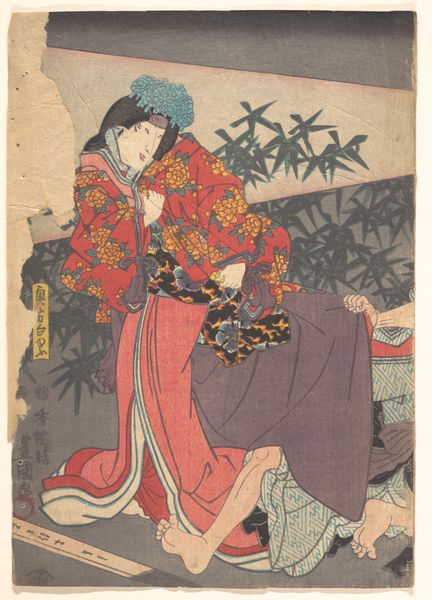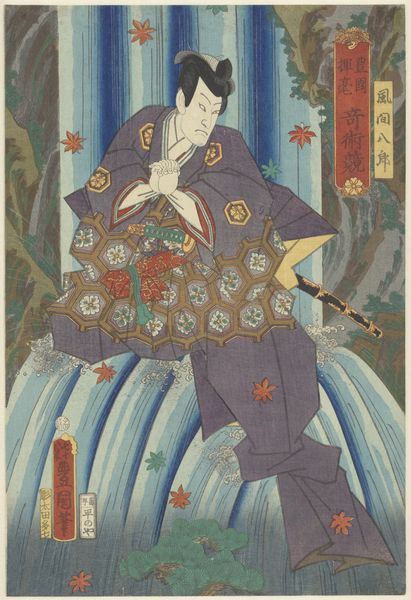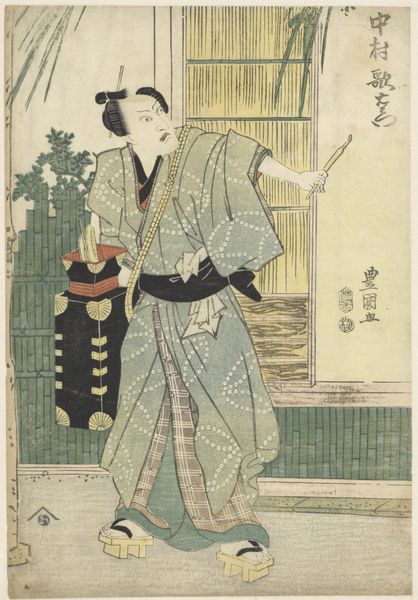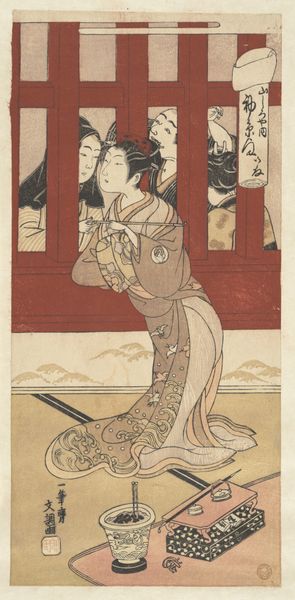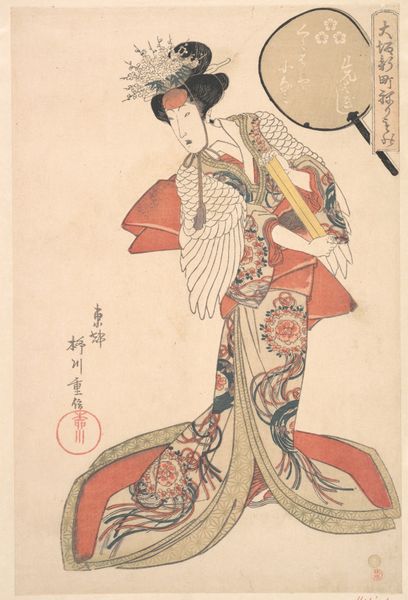
print, woodblock-print
#
portrait
# print
#
asian-art
#
ukiyo-e
#
woodblock-print
#
japanese
#
genre-painting
Dimensions: H. 14 5/16 in. (36.4 cm); W. 10 in. (25.4 cm)
Copyright: Public Domain
Curator: It's evocative, isn't it? A poignant study in blues and grays...it projects a quiet vulnerability. Editor: Indeed. We're looking at a Japanese woodblock print from between 1840 and 1860, attributed to Utagawa Kunisada, aptly titled "Print," and now residing here at the Met. What I immediately notice is the materiality. The tactile quality of the paper, the ink saturation, and even the possible labor involved in the making of the printing blocks and process. Curator: Absolutely. Beyond its surface aesthetics, the print draws us into a narrative, a moment of quiet contemplation or perhaps introspection within the female space. Considering the Edo period, it subtly touches upon the prescribed roles and limited agency afforded to women, offering us a glimpse into this delicate balance. Editor: Yes, I appreciate you situating it there! We're obviously engaging with Ukiyo-e here, but seeing the artist's process – the ways line and color intersect to make this 'floating world' accessible through relatively cheap woodblock editions speaks volumes about labor, distribution, and material consumption. Curator: Right. Ukiyo-e's prevalence was about access. Considering its origin as popular art form consumed by burgeoning middle classes broadens my reading of its symbolism of gender, and class identity in Kunisada's artistic project. The composition itself suggests spatial constraints which echoes that prescribed life. Editor: I see that point, but also consider that Kunisada became hugely successful and well-known by embracing a world of printmaking driven by merchant exchange networks—a very conscious artistic decision shaping his legacy that also allowed for social critique. This access is about how material constraints and process allow for narratives beyond the status quo, particularly during rapid urbanization in Japan, and globalizing trends of commercial distribution! Curator: A nuanced perspective, that. I’ll ponder that. It brings to my attention again, the woman's contemplative position that possibly echoes against prevailing winds. Editor: Well, regardless of our viewpoints, it has truly been illuminating to engage with "Print." The power lies in its ability to elicit thoughtful reflections on craft and the historical underpinnings that produced them. Curator: Precisely. And perhaps its resonance, at least for me, is in providing some reflection for our continued engagement of issues facing female identities.
Comments
No comments
Be the first to comment and join the conversation on the ultimate creative platform.
